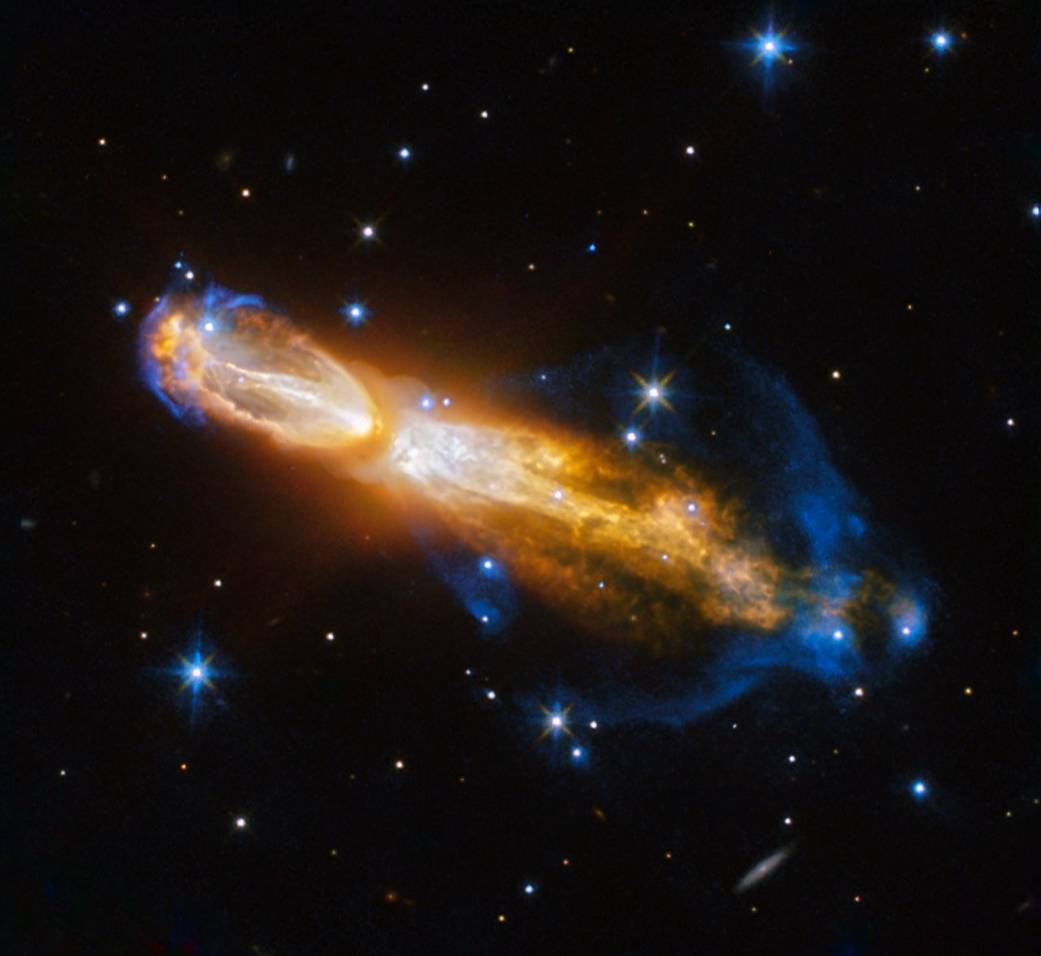Brilliant Star Death in “Rotten Egg” Nebula: NASA Image of the Day
Goodnight Miss Calabash Nebula, wherever you are! (If you get that joke, congratulations! You’re old).
So here is another example of the universe being beautiful in the throws of death. I mean, if you’re a sun and you’re gonna die it might as well be spectacular right? Also, this particular “star death” smells like rotten eggs. The reason why is described below, as well as stating the star “blows its outer layers of gas and dust out into the surrounding space.” Something I’ve been accused of doing on many occasions. (Yep, that’s a fart joke. Keeping it classy people.)
And in keeping with that kind of humor it just so happens that the smelly “rotten egg” nebula happens to reside in the constellation of Puppis. Puppis of course means “poop deck.” So let the low-brow jokes begin!
(Seriously, it means poop deck. From Wikipedia: “Puppis is a constellation in the southern sky. Puppis, the Poop Deck, was originally part of an over-large constellation, the ship of “Jason and the Argonauts”, Argo Navis, which centuries after its initial description, was divided into three parts, the other two being Carina [the keel and hull], and Vela [the sails of the ship”].)
Hubble Captures Brilliant Star Death in “Rotten Egg” Nebula
The Calabash Nebula, pictured here — which has the technical name OH 231.8+04.2 — is a spectacular example of the death of a low-mass star like the sun. This image taken by the NASA/ESA Hubble Space Telescope shows the star going through a rapid transformation from a red giant to a planetary nebula, during which it blows its outer layers of gas and dust out into the surrounding space. The recently ejected material is spat out in opposite directions with immense speed — the gas shown in yellow is moving close to one million kilometers per hour (621,371 miles per hour).
Astronomers rarely capture a star in this phase of its evolution because it occurs within the blink of an eye — in astronomical terms. Over the next thousand years the nebula is expected to evolve into a fully-fledged planetary nebula.
The nebula is also known as the Rotten Egg Nebula because it contains a lot of sulphur, an element that, when combined with other elements, smells like a rotten egg — but luckily, it resides over 5,000 light-years away in the constellation of Puppis.
Courtesy of NASA.org | Image credit: ESA/Hubble & NASA, Acknowledgement: Judy Schmidt | Text credit: European Space Agency












Likhon chowdhury says:
Conor says:
Andy Garcia says: